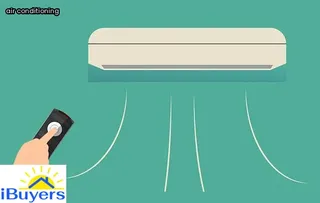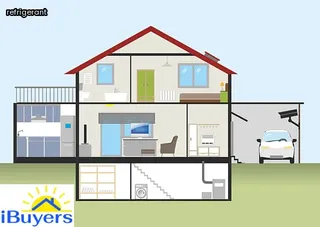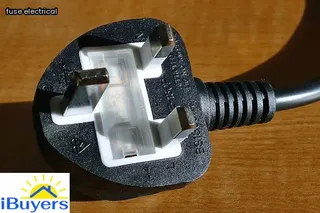When troubleshooting common air conditioner issues, it is important to understand the basics of AC repair. Start by inspecting the air filter and cleaning or replacing it if necessary.
Next, check for any obstructions in the vents and clear them if found. If your AC does not have a reset button, then you may need to reset the circuit breaker instead.
In addition, confirm that all of the AC’s safety switches are functioning properly. Lastly, make sure that there is no damage to the compressor or condenser coils and replace them if needed.
With these simple steps, you can quickly and easily fix common air conditioning problems on your own.

The key to quickly and easily fixing common air conditioner issues is having the right tools. As with any DIY project, it's essential to have the right supplies in order to get the job done correctly.
The most important tools for repairing an air conditioner include a screwdriver, wire cutters, electrical tape, pliers, a voltage detector and a multimeter. A screwdriver is necessary for removing panels or covers so that you can access the interior of the unit.
Wire cutters are invaluable for snipping wires when necessary. Electrical tape is required for insulating exposed wires after cutting or repairing them.
Pliers will assist you in dealing with any bolts or screws that may need to be turned or adjusted. A voltage detector is helpful when working with potentially dangerous circuits while a multimeter is needed to measure current and check continuity of wiring.
Having these items on hand before beginning your DIY repair will ensure that you do not run into any unexpected problems along the way.
When working with electrical components on an air conditioner, safety should always be the top priority. To avoid electric shock, always disconnect the power source before beginning repairs.
It is also important to wear protective clothing and gloves when handling any electrical wiring or parts. To reduce the risk of fire, check for any exposed wires or loose connections and replace them if necessary.
Make sure to keep all tools away from live circuits and consult a professional for any major repairs. Lastly, it is always recommended to use a voltage tester prior to touching any electrical components to ensure that there is no current running through them.
Following these important steps will help you safely perform DIY repairs on your air conditioner quickly and easily.

Refrigerant leaks can be a tricky problem to identify and fix in an air conditioner, but are essential to maintaining proper function. The key to quickly and easily fixing a refrigerant leak is recognizing the signs and knowing what steps to take next.
One of the most common symptoms of a refrigerant leak is decreased airflow from the vents, which can cause your air conditioner to run longer without ever reaching the desired temperature. Another indication is a hissing sound coming from the unit, which indicates that pressure is escaping from somewhere inside.
To begin diagnosing the issue, inspect all visible components for signs of corrosion or wear. If nothing appears to be wrong with these parts, you may need to invest in a refrigerant leak detector tool that can detect small amounts of Freon in areas not visible by eye.
Once you have identified where the leak is coming from, use sealants or soldering techniques to repair it before recharging the system with new refrigerant. Following these steps should help you fix any refrigerant leak issues with ease and get your air conditioner working again in no time!.
Cleaning condenser coils is an important part of regular maintenance for air conditioners. If the coils are not cleaned regularly, dirt, dust, and other debris can build up and reduce the efficiency of the system.
To ensure that your air conditioner runs smoothly and efficiently, it’s important to clean the condenser coils properly. Start by turning off power to the unit at the circuit breaker or disconnect switch.
Then remove any debris from outside of the unit with a soft brush or vacuum cleaner. Next, use a garden hose to spray water over the condenser coil fins to loosen stubborn dirt and debris.
After spraying, use a soft cloth dampened with detergent and water to wipe away dirt and grime from between each fin. Finally, turn on power to the unit again at the circuit breaker or disconnect switch before replacing any panels or covers you removed in order to access the condenser coil fins.
With these simple steps, you can easily clean your air conditioner's condenser coils yourself quickly and effectively.

If your air conditioner isn't working, it could be due to a faulty connection in the fuses or circuit breakers. It's important to check these components when troubleshooting air conditioner issues as they are often at the root of the problem.
To examine both fuses and circuit breakers, start by locating and turning off the main power switch for your AC unit. Once you've identified the fuses and circuit breakers connected to your air conditioner, test each one with a voltage tester.
If you detect any fault current, then the fuse or breaker is likely damaged and needs to be replaced immediately. Make sure that all connections are securely tightened before replacing the fuse or breaker.
When done correctly, this will help ensure that your air conditioner is functioning properly again in no time!.
Preventative maintenance is key to keeping your air conditioner running smoothly and avoiding costly repairs. To ensure that your AC is in good working order, it's important to regularly inspect the system, check for any potential issues, and perform basic maintenance.
This can include cleaning or replacing air filters, checking the condenser coils, inspecting electrical connections and wiring, and lubricating any moving parts. Additionally, you should also monitor the temperature of the evaporator coil to make sure that it isn't too cold or too hot.
If you find that your AC isn't cooling as efficiently as it used to, it might be time for a professional tune-up of the entire unit. Doing so can help identify and fix any problems before they become more serious.
With these preventative maintenance tips in mind, you can keep your air conditioner running smoothly throughout the year and avoid expensive repair bills!.

Replacing an AC contactor can be a daunting task, but with the right tools and knowledge, you can easily fix this common air conditioner problem in no time. Before attempting to replace the contactor, it is important to turn off power to the unit as well as disconnect all wires connected to the contactor.
Next, use a flathead screwdriver to remove any screws holding the contactor in place and then pull it out of its housing. Once you have removed the old contactor, insert your new one into place and secure it with screws if necessary.
After that, reconnect all wires and re-apply power to the unit. Finally, test the system to make sure that everything is functioning properly and your air conditioner issue has been resolved.
Once the repairs have been completed, it is important to test them to ensure the air conditioner is working properly. Start by turning the unit on and checking for any unusual noises or vibrations.
Listen for any squeaking or squealing sounds that can indicate a belt is slipping or there is a problem with the motor. Check the blower fan to make sure it is running at its proper speed and that all of the air vents are open and clear.
Test the thermostat by adjusting it up and down several times to make sure it is responding correctly. Finally, measure the temperature in each room to see if they match what you set on the thermostat.
If all of these tests pass, your repair job was successful and your air conditioner will be back up and running quickly and easily!.

Regular window air conditioner maintenance has many benefits that can help you save time, money and headaches. Cleaning the filter regularly ensures the AC unit is running efficiently and prevents it from working too hard and using more energy than necessary.
Checking for any worn or frayed wires or loose parts helps prevent fire hazards. Taking a few minutes to inspect your AC's refrigerant levels can alert you to any potential leaks before they cause costly damage.
Regularly checking the fins and coils of your window AC will help keep them free of dust and debris, which allows them to function at maximum efficiency and prolongs their life span. When issues do arise, having an understanding of how your AC works can help you troubleshoot the problem quickly and correctly diagnose what needs to be done for a successful repair.
A DIY guide on how to fix common air conditioner issues quickly and easily can provide valuable insights into proper maintenance and repair tips that will help keep your air conditioner running optimally for years to come.
Tuning up your air conditioner unit yearly is an important part of caring for your home appliances. It is a simple task that can be done quickly and easily with the right tools and a basic DIY guide.
Taking the time to tune up your AC unit will help it run more efficiently, prolong its life span, and save you money on repairs in the long run. You'll need some basic tools such as a screwdriver, pliers, wire brush, and a vacuum cleaner.
Start by cleaning all the components of your air conditioner such as the air filter, fan blades, coils, blower motor and other moving parts. Then check for any loose bolts or screws and tighten them if necessary.
Next inspect any electrical wiring for signs of corrosion or fraying and replace if necessary. Finally, check all fluid levels such as refrigerant levels to ensure optimal performance and energy efficiency from your AC unit throughout the year.
With these simple steps you can easily fix common issues to keep your AC running smoothly for years to come.

When selecting the ideal air conditioner model for your home, it is important to consider factors such as size, energy efficiency, and noise level. The larger the space you need to cool, the bigger the unit should be.
To get the most out of your energy bill, look for an energy-efficient model with a higher SEER rating. Additionally, some homeowners prefer quieter units so looking for one with low noise levels should be taken into consideration when shopping around.
It is also helpful to research different models and brands to find which fits best with your living space and personal needs. Lastly, always check user reviews to ensure that you make a wise purchase.
Taking all of these components into account will help you choose the right air conditioner model that meets all of your needs while keeping your home comfortable during hot summer days.
Air conditioners are a common accessory in many homes and businesses, providing relief from the summer heat. They come in several different varieties, each with its own advantages and disadvantages.
Window ACs are among the most popular type of air conditioner due to their affordability, ease of installation and portability. These units typically have a lower BTU rating than other types, so they are better suited for smaller spaces.
Central air conditioning is more expensive to install but provides the greatest efficiency and cooling for larger areas. Ductless split systems offer an affordable way to cool multiple rooms in a home without needing to install ductwork.
Geothermal systems use underground loops of water or refrigerant to take advantage of the Earth’s natural temperature stability and provide significant energy savings over traditional air conditioning systems. Hybrid systems combine conventional air conditioning with geothermal technology for even greater energy efficiency.
Finally, evaporative coolers offer an inexpensive alternative to traditional air conditioning units but are best suited for dry climates since they rely on evaporating water into the air to cool it down. Understanding these different types of air conditioners and their advantages can help you make an informed decision when selecting one for your home or business.
If your air conditioner is not cooling, there are a few common issues that could be to blame. A dirty or blocked filter, low refrigerant levels, and a malfunctioning compressor are all possible causes.
A DIY guide can help you quickly and easily identify the issue and fix it so you can enjoy cool air again. Cleaning or replacing the filter is usually the first step in troubleshooting an AC unit.
A clogged filter prevents airflow and reduces efficiency, resulting in warm air instead of cold. Refrigerant levels should also be checked; if they are low, then a professional will need to come and recharge the system with more refrigerant.
Lastly, if all else fails, the compressor may be malfunctioning and require professional repair. With this DIY guide, you will be able to diagnose and fix common air conditioner issues quickly and easily so that you can restore comfort in your home.

If your air conditioner isn't working, don't panic—there are steps you can take to diagnose and fix the problem quickly and easily. Start by checking if the system is plugged in properly, if the circuit breaker has tripped, or if the thermostat is set correctly.
If all of these appear to be in order, consider cleaning or replacing the air filter, testing the condenser fan motor, or inspecting the evaporator coil for dirt buildup. With a little DIY know-how and a few simple tools, you can get your air conditioner back up and running again in no time.
For more detailed guidance on how to repair common AC issues, check out our comprehensive DIY guide: How To Fix Common Air Conditioner Issues Quickly And Easily.
If you're looking to fix your air conditioner yourself, then a DIY guide can help. With the right tools and knowledge, you can quickly and easily resolve some of the most common AC issues.
From cleaning or replacing filters to checking refrigerant levels, a DIY guide can provide detailed instructions and walk you through the steps necessary to maintain your air conditioner. Additionally, many guides include helpful troubleshooting tips for diagnosing specific problems and making informed decisions about repair costs.
With guidance from an experienced professional, or even an online video tutorial, fixing your air conditioner yourself can be an inexpensive and rewarding experience.
If your air conditioner is running, but not cooling, it could be due to a number of possible issues. Checking the thermostat settings can help you determine if the AC is working correctly or not.
If the thermostat is set to cool and its fan is on, yet the air isn't getting cooler, there could be a problem with the compressor or a refrigerant leak. To quickly and easily fix these common air conditioner issues, try following this DIY guide: First, check the outdoor unit of your AC to ensure that it’s clear of any debris like leaves or dirt that may be blocking airflow.
If necessary, use a garden hose to clean off dirt or debris from the fins. Then make sure all electrical connections are secure and tight in order to avoid any potential safety hazards as well as reduce wear and tear on the unit.
Lastly, inspect for any visible signs of refrigerant leaks and call a professional if needed for repairs. By following these steps you can easily diagnose and fix common air conditioner issues!.